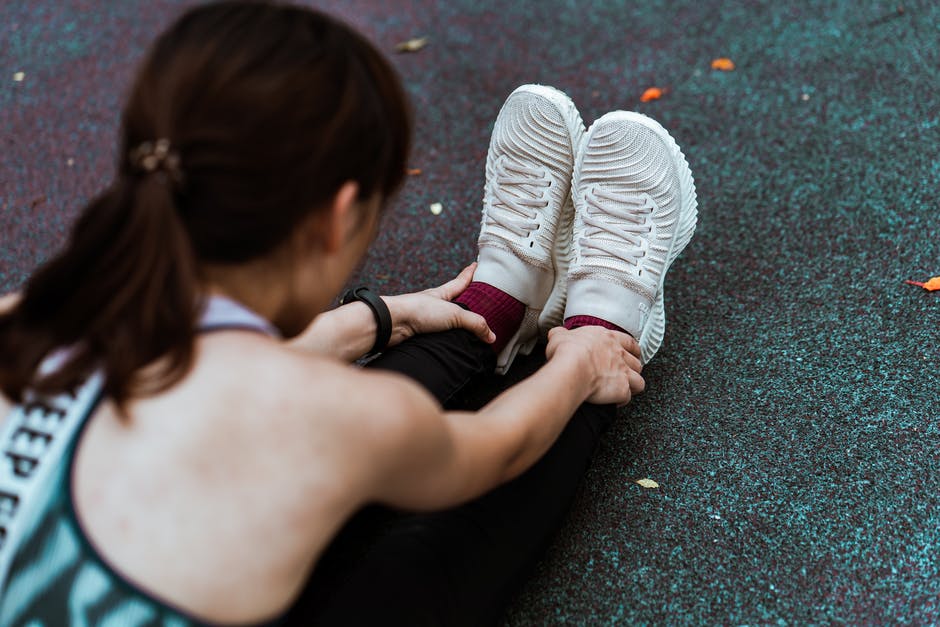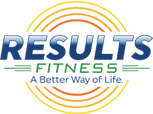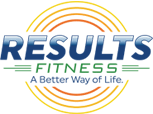
Did you know that athletes who don’t have the right workout recovery strategies increase the chances of developing overtraining syndrome?
This is a serious condition that you should do your best to avoid. Those who have it tend to lose motivation to act, go through mood swings, and are more prone to getting injured. The good news is that all you need to do to avoid overtraining syndrome is develop a post-workout recovery plan.
We’ve broken down the top recovery tips to help you know how to do this. Keep reading, and we’ll tell you what’s important to know.
Why Workout Recovery Is Important
Contrary to what most people believe, you don’t build muscle while exercising. You build muscle when you’re taking a break between workouts.
At its essence, exercise is about creating stress on the body. When you stress muscles, they develop tiny tears.
If you choose not to do anything to recover, you won’t give your muscles enough time to heal before they tear again. This will cause them to become inflamed, and your body will probably feel tired.
Additionally, those who don’t leave time for workout recovery won’t perform as well and will risk developing the overtraining syndrome.
Many people think that muscle recovery is only important for those who do strength training. The truth is that it’s also important to recover after doing cardio exercises such as running, bicycling, and swimming.
No matter what kinds of exercise you do, the body responds to this stimulus by adapting to it. This is also known as “getting into shape.” If you are a runner, your body will improve its ability to use oxygen, which means you’ll begin to have more endurance.
People who know how to recover from exercise quickly are able to arrive at their next workout with the strength and endurance needed to perform at their best.
1. Remember to Stretch and Cool Down
You should start the recovery process immediately after you finish your workout routine. When you train, metabolic waste gets stuck inside of your body. This is why your cells, veins, and lungs need to be flushed out before you lay down and relax.
Therefore, you should train yourself to keep moving at a slow rhythm right from the moment that you finish an exercise routine. This will ease your heart back to a resting level.
After working out, your heart will slow down too quickly if you don’t do this. This means that the blood that’s built up around stressed body parts and muscles will get stuck in these places. If this happens, you’re likely to feel nauseous.
Once you’ve brought your heart rate down, start doing some stretches in areas of your body where you feel tense. This is also a good time to focus on improving your flexibility because your muscles are still warm and supple.
Once you become more flexible, it will be easier for you to increase your range of movement. This means that you’ll boost your workouts in the future.
2. Drink Lots of Water
It’s easy to underestimate how much water you need to drink while you’re exercising. This is why so many athletes experience dehydration. In fact, the body often loses up to a quart of water after it’s been exercising for an hour.
You should do your best to drink water as quickly as possible at the end of a workout. It would be best if you also tried to take occasional breaks during your routine to take a drink of water.
If your body doesn’t have enough water, you’re likely to develop muscle cramps, fatigue, and feel mentally disoriented. This is because you’ve lost too many electrolytes from sweating. If you don’t drink water to replenish them, it’s possible that your muscles will continue to feel weak for several hours after you work out.
It’s especially important to drink lots of water after doing functional fitness for weight loss.
3. Drink a Protein Smoothie After Your Workout Routine
It’s always important to consume carbohydrates and protein after working out, and the best way to do this is by drinking a protein shake. You should try your best to use whey protein because the body digests it much more quickly than other types of protein.
After the body digests whey, the protein’s amino acids start generating new proteins. If you want your muscles to grow, the body needs to synthesize new proteins more quickly than they get broken down. By consuming proteins that the body is able to use quickly, you’ll maximize muscle growth.
It’s a good idea to drink lots of shakes and smoothies after exercising because they are easy and quick to prepare. Depending on your needs, you can add unique ingredients that will improve your ability to recover. This includes things like vitamins, supplements, fruits, and vegetables.
4. Don’t Forget About the Carbs
You’ll rebuild your stores of glycogen if you consume carbs after working out. This is because the body converts carbohydrates to glycogen. The body needs this chemical to create ATP (adenosine triphosphate), which is responsible for sending energy to the muscles that need it the most.
This means that your muscles are less likely to feel sore and weak after working out if you consume lots of carbs. But it’s important to know that some types of carbs are better than others.
Foods that contain refined carbohydrates are highly processed, and they have very little fiber. This includes include things like white bread, crackers, pastries, and candy.
Complex carbohydrates are unprocessed and are more likely to be in their natural state. Since it takes the body longer to break them down, they help your blood sugar stay more stable.
It’s best to consume refined carbohydrates instead of simple carbohydrates after you exercise. The best sources of complex carbohydrates include fruits, sweet potatoes, brown rice, and quinoa.
5. Make Use of High-Tech Recovery Options
Thanks to technology, athletes have more recovery tools at their disposal than they have ever had before. Here are some of the top high-tech devices that can help you quickly recover.
Spryng
This device wraps around your calves and helps to relieve swelling. You should consider using it if your legs often ache after a workout. It will improve circulation in your legs, which will help them to start feeling better.
Fitness Rollers
This foam roller will massage tired muscles by vibrating at high frequencies. Even though it’s not usually comfortable to use foam rollers, they will help you to start feeling better quickly.
The Wave Tool
This device is so tiny that you can fit it in your purse. You can use it to break apart scar tissue and injuries from the past that are still bothering you. It has various surfaces that you can massage against parts of your body that need healing.
Theragun
The Theragun uses percussive technology to improve circulation and relieve muscle tension. Even though it’s expensive, numerous professional athletes use it every time after working out.
6. Get Lots of Sleep
Even though it feels like you’re not doing anything when you’re sleeping, the body is actually very active. One important thing it does is called protein synthesis. This involves adding protein to muscles so that they become stronger.
Your body also balances its hormone levels while you’re sleeping. This means that you’re not letting yourself recover if you don’t get at least seven hours of sleep per night.
You should also try your best not to use digital devices such as tablets and smartphones right before going to bed. This is because the blue light that they emit can interfere with your sleeping patterns. Therefore, if you sleep for nine hours after using digital devices before going to bed, it might feel as if you’d only slept for five hours.
7. Load Up on Potassium and Sodium
Your body needs potassium to perform at its best. Organs such as the heart and kidneys need this mineral to work correctly. Your body also uses potassium to contract and relax muscles that have been strained.
It’s essential to have plenty of potassium in your body for metabolism. If you don’t have enough potassium, it’s possible that you’ll develop muscle cramps. You also might feel highly fatigued after working out.
If you want to start consuming more of this vital mineral, bananas should be your best friend because they’re full of it.
You also need to replenish sodium in your body after working out. This important electrolyte regulates how much water is inside and around your cells. They need to have the right amount of water to transmit signals and maintain stable blood pressure.
If you don’t have enough sodium in your body after working out, it’s possible that you’ll feel sick to your stomach. You might also have a headache and feel agitated.
8. Offer Yourself a Massage
You must give yourself massages after your training routines if you frequently experience muscle aches and pains. One easy way to do this is by using a foam roller. These are inexpensive, and you can easily find them at most sports stores.
Foam rollers will break apart tight and painful muscles that hold you back from performing at your best.
To massage yourself with your hands, start by placing them along the back of your neck. Identify areas that are sore and start pressing firmly in these locations with your fingers. Try to move them in circular motions.
Continue moving your hands down your back and along your shoulders while performing the same technique. Remember to focus on areas of the body that are sore or tired.
9. Make Sure You’re Getting Enough Vitamin D
Not only does your body needs vitamin D for bone growth, but it’s also an essential nutrient for reducing muscular fatigue. Those who have vitamin D deficiencies have weaker bones, which means that they’re more prone to getting fractured.
If you want to start consuming more vitamin D, you should try to load up on oily fish such as salmon, mackerel, sardines, trout, and halibut. Red meats and eggs are also rich in vitamin D.
You can also use supplements to increase how much vitamin D is in your body. If you choose to do this, make sure that you don’t take too many pills. It’s possible to get sick if you have too much vitamin D in your system.
10. Spread Out Your Meals
Recovery is a continual process. It’s not over in just two or three hours. This means that your body needs nourishment to continue recovering.
Even though drinking a protein shake right after working out goes a long way, you should try your best to continue consuming protein throughout the day.
The best way to do this is by spacing out your meals. Instead of eating three meals a day, consider eating four or five smaller meals every day.
Start Making Use of Post-Workout Recovery Techniques Today
If you’re trying to figure out what post-workout recovery techniques are most effective, remember that there are various simple things that you can start doing at the end of your training routines.
You can start by stretching and cooling down. It’s also a good idea to drink a post-workout protein shake.
Are you looking for a place to work out, get stronger, and receive the support you need to recover properly? If so, then consider joining Results Fitness. Don’t hesitate to contact us and try a free pass today.

